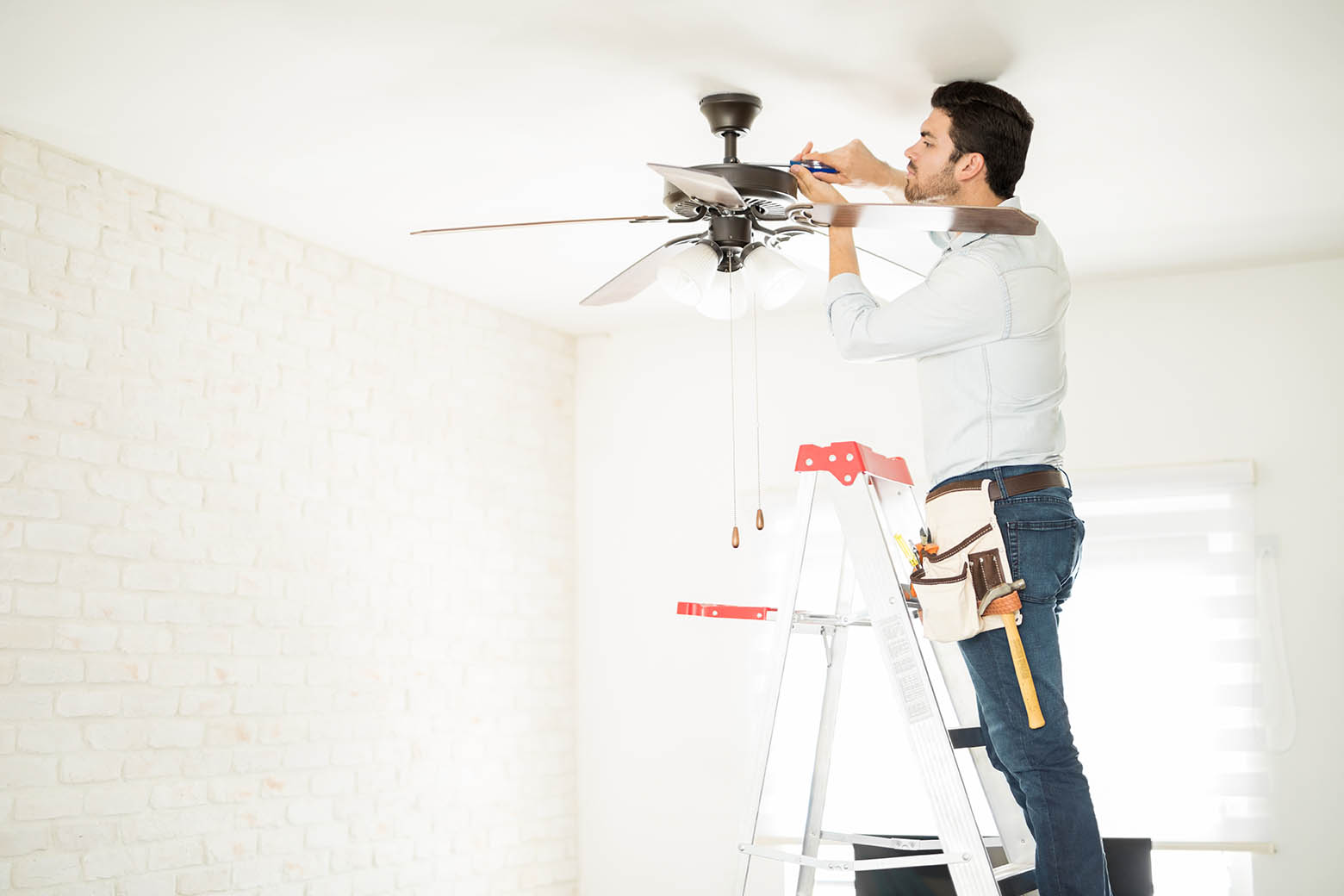How to Fix a Wobbly Ceiling Fan in 4 Steps (with Pictures)
-

- Last updated:

A ceiling fan provides a lot of comfort throughout the year, helping us keep cool in the summer and working to circulate warm air in the winter. But if yours is starting to wobble, you’ll need a fix in place before you can start enjoying all the benefits it has to offer. Without correcting its motion, you could risk damage or injury from a falling fan.
A slight wiggle isn’t unusual, but when your fan is shaking more than an ⅛” from side to side, it’s time to investigate the problem before it gets worse. Fortunately, the fix is straightforward, and it often takes less than 30 minutes to resolve the issue. In this article, we’ll walk you through how to tighten a ceiling fan to restore its safe, steady performance.
How to Fix a Wobbly Ceiling Fan (4 Steps)
1. Check the Mounting Bracket

To avoid accidentally turning the fan on while working on it, ensure that all the switches are off. You can also turn the fan off at the circuit breaker for added peace of mind.
Use an A-frame ladder to reach the fan’s canopy covering the mounting bracket on the ceiling. Unscrew the cover to check the bracket installation and the integrity of the fan box.
There are a few potential causes of a fan wobble that originates near the ceiling:
- A loose or improper fan box
- A loose mounting bracket
- An improperly placed hanger ball
If your fan has a down rod, check that the hanger ball is secure in the bracket. Then, make sure the mounting bracket is screwed tightly into the fan box.
2. Check the Fan Box

If your ceiling fan was attached to an improper box, it will eventually start wobbling before failing. When a ceiling fan replaces a ceiling light, the junction box often needs an upgrade to hold the weight of a fan.
Your fan should be attached to a metal junction box, and you can often even see a small marking on the inside telling you if it’s a fan box. If it’s the correct kind of box, give it a gentle wiggle to see whether it’s sitting firmly in the ceiling. You can fix a loose fan box by tightening the lag bolts or the adjustable brace, depending on how it’s mounted.
If you have a plastic junction box, you’ll need to swap it out for a sturdier metal fan box. You can secure a new unit with lag bolts drilled into a 2×4” cross beam or with an adjustable fan brace that keeps a tight grip between two ceiling joists.
3. Measure the Blade Height

If everything is tight at the fan box and bracket, you likely have an issue with one of the fan blades. Measure the distance between each fan blade and the ceiling with a measuring tape. One blade that is significantly higher or lower could be the source of the wobble.
A blade that is uneven with the rest may be warped, or it might have come loose from its attachment to the motor. You can often tell if the blade or blade iron is damaged or bent by looking down the length of the blade.
Damaged components may require replacements that you’ll need to order from the manufacturer. If the parts are all in good condition, tighten the screws that connect the blade to the iron and the iron to the motor.
4. Balance a Faulty Blade

Even after you tighten all the screws throughout the fixture, an unbalanced blade will cause the fan to continue to wobble. Fixing the issue is a simple process of finding the unbalanced piece and adding weight to steady the movement.
You can buy a blade balance kit from a home improvement store, or you can use everyday household items to fix your fan.
Tape a dime to the middle of a fan blade to add a little weight. Turn the fan on low speed to see if the fan still wobbles. Do this for each blade, one at a time, until the fan doesn’t wobble. When it runs smoothly, you know you’ve found the unbalanced blade.
When you find the unbalanced blade, test the fan and adjust the coin’s position on the blade until it spins wobble-free. You can even fasten the coin to the blade with a touch of glue.
- See Also: Ceiling Fan Installation Costs
Conclusion
It’s normal for a spinning fan to wobble a little when it’s spinning at full speed. But when you start noticing odd noises and intense shaking, you need to investigate the issue and correct the problem.
By following this guide on how to tighten a ceiling fan, you can fix most issues with a wobbly fan in a matter of minutes. These small, simple steps could make a huge difference in protecting you and your home from unnecessary harm, and they’ll ensure that you get the best performance and life from your ceiling fan.
Featured Image Credit: alvinmatt , Pixabay
Contents

